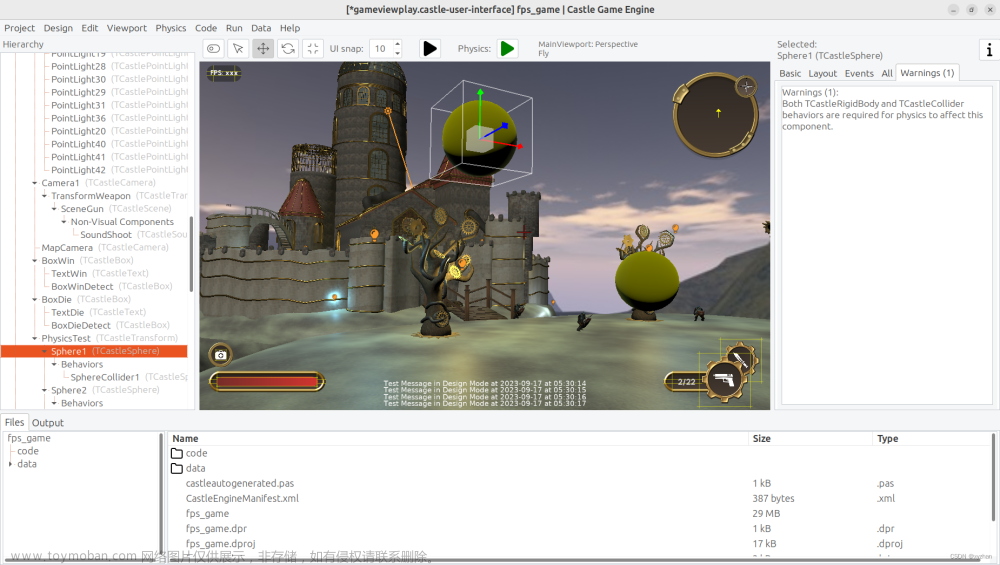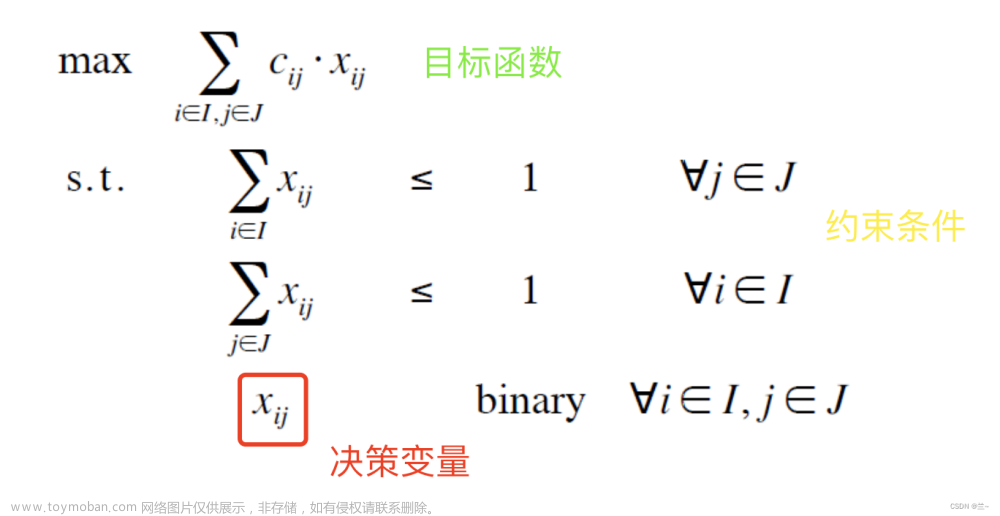8.2 高级的
8.2.1 QNN HTP 共享缓冲区教程
介绍
本教程介绍如何使用数据缓冲区在 QNN HTP 后端的处理域之间进行共享访问。使用共享缓冲区可以消除主机 CPU 上的客户端代码和 HTP 加速器之间的数据复制。
HTP 后端支持两种类型的共享内存。
| Qnn_MemDescriptor_t 类型 | QnnMemHtp_Descriptor_t 类型 | 描述符 |
|---|---|---|
| QNN_MEM_TYPE_ION | 1、不适用 | 每个张量将被映射到它自己的共享缓冲区; 2、文件描述符和内存句柄之间的一对一关系 |
| QNN_MEM_TYPE_CUSTOM | QNN_HTP_MEM_SHARED_BUFFER | 1、多个张量将被映射到一个共享缓冲区;2、文件描述符和内存句柄之间的一对多关系 |
》笔记
本教程仅关注共享缓冲区的使用。SDK 示例代码中有一些先决条件,此处未详细讨论。用户可以参考QNN文档中的相应部分,或者参考SampleApp。
SampleApp 文档:示例应用程序教程
示例应用代码:${QNN_SDK_ROOT}/examples/QNN/SampleApp
加载必备共享库
配备高通芯片组的硬件设备包含一个共享库,该库提供共享缓冲区操作的功能。
加载共享库
该libcdsprpc.so共享库可在大多数配备高通芯片组的主流设备(SD888 及更高版本)上使用。
我们可以动态加载它,如下所示:
1 void* libCdspHandle = dlopen("libcdsprpc.so", RTLD_NOW | RTLD_LOCAL);
2
3 if (nullptr == libCdspHandle) {
4 // handle errors
5 }
解析符号
共享库成功加载后,我们可以继续解析所有必需的符号。
下面的代码片段显示了解析共享库中符号的模板:
1/**
2* Defination: void* rpcmem_alloc(int heapid, uint32 flags, int size);
3* Allocate a buffer via ION and register it with the FastRPC framework.
4* @param[in] heapid Heap ID to use for memory allocation.
5* @param[in] flags ION flags to use for memory allocation.
6* @param[in] size Buffer size to allocate.
7* @return Pointer to the buffer on success; NULL on failure.
8*/
9typedef void *(*RpcMemAllocFn_t)(int, uint32_t, int);
10
11/**
12* Defination: void rpcmem_free(void* po);
13* Free a buffer and ignore invalid buffers.
14*/
15typedef void (*RpcMemFreeFn_t)(void *);
16
17/**
18* Defination: int rpcmem_to_fd(void* po);
19* Return an associated file descriptor.
20* @param[in] po Data pointer for an RPCMEM-allocated buffer.
21* @return Buffer file descriptor.
22*/
23typedef int (*RpcMemToFdFn_t)(void *);
24
25RpcMemFreeFn_t rpcmem_alloc = (RpcMemAllocFn_t)dlsym(libCdspHandle, "rpcmem_alloc");
26RpcMemFreeFn_t rpcmem_free = (RpcMemFreeFn_t)dlsym(libCdspHandle, "rpcmem_free");
27RpcMemToFdFn_t rpcmem_to_fd = (RpcMemToFdFn_t)dlsym(libCdspHandle, "rpcmem_to_fd");
28if (nullptr == rpcmem_alloc || nullptr == rpcmem_free || nullptr == rpcmem_to_fd) {
29 dlclose(libCdspHandle);
30 // handle errors
31}
将 QNN_MEM_TYPE_ION 与 QNN API 结合使用
以下是 ION 共享缓冲区的表示,其中每个张量都有自己的共享缓冲区,具有自己唯一的内存指针、文件描述符和内存句柄。
一个例子如下所示:
HTP 共享缓冲区示例
1// QnnInterface_t is defined in ${QNN_SDK_ROOT}/include/QNN/QnnInterface.h
2QnnInterface_t qnnInterface;
3// Init qnn interface ......
4// See ${QNN_SDK_ROOT}/examples/QNN/SampleApp code
5
6// Qnn_Tensor_t is defined in ${QNN_SDK_ROOT}/include/QNN/QnnTypes.h
7Qnn_Tensor_t inputTensor;
8// Set up common setting for inputTensor ......
9/* There are 2 specific settings for shared buffer:
10* 1. memType should be QNN_TENSORMEMTYPE_MEMHANDLE; (line 40)
11* 2. union member memHandle should be used instead of clientBuf, and it
12* should be set to nullptr. (line 41)
13*/
14
15
16size_t bufSize;
17// Calculate the bufSize base on tensor dimensions and data type ......
18
19#define RPCMEM_HEAP_ID_SYSTEM 25
20#define RPCMEM_DEFAULT_FLAGS 1
21
22// Allocate the shared buffer
23uint8_t* memPointer = (uint8_t*)rpcmem_alloc(RPCMEM_HEAP_ID_SYSTEM, RPCMEM_DEFAULT_FLAGS, bufSize);
24if (nullptr == memPointer) {
25 // handle errors
26}
27
28int memFd = rpcmem_to_fd(memPointer);
29if (-1 == memfd) {
30 // handle errors
31}
32
33// Fill the info of Qnn_MemDescriptor_t and regist the buffer to QNN
34// Qnn_MemDescriptor_t is defined in ${QNN_SDK_ROOT}/include/QNN/QnnMem.h
35Qnn_MemDescriptor_t memDescriptor = QNN_MEM_DESCRIPTOR_INIT;
36memDescriptor.memShape = {inputTensor.rank, inputTensor.dimensions, nullptr};
37memDescriptor.dataType = inputTensor.dataType;
38memDescriptor.memType = QNN_MEM_TYPE_ION;
39memDescriptor.ionInfo.fd = memfd;
40inputTensor.memType = QNN_TENSORMEMTYPE_MEMHANDLE;
41inputTensor.memHandle = nullptr;
42Qnn_ContextHandle_t context; // Must obtain a QNN context handle before memRegister()
43// To obtain QNN context handle:
44// For online prepare, refer to ${QNN_SDK_ROOT}/docs/general/sample_app.html#create-context
45// For offline prepare, refer to ${QNN_SDK_ROOT}/docs/general/sample_app.html#load-context-from-a-cached-binary
46Qnn_ErrorHandle_t registRet = qnnInterface->memRegister(context, &memDescriptor, 1u, &(inputTensor.memHandle));
47if (QNN_SUCCESS != registRet) {
48 rpcmem_free(memPointer);
49 // handle errors
50}
51
52/**
53* At this place, the allocation and registration of the shared buffer has been complete.
54* On QNN side, the buffer has been bound by memfd
55* On user side, this buffer can be manipulated through memPointer.
56*/
57
58/**
59* Optionally, user can also allocate and register shared buffer for output as adove codes (lines 7-46).
60* And if so the output buffer also should be deregistered and freed as below codes (lines 66-70).
61*/
62
63// Load the input data to memPointer ......
64
65// Execute QNN graph with input tensor and output tensor ......
66
67// Get output data ......
68
69// Deregister and free all buffers if it's not being used
70Qnn_ErrorHandle_t deregisterRet = qnnInterface->memDeRegister(&tensors.memHandle, 1);
71if (QNN_SUCCESS != registRet) {
72 // handle errors
73}
74rpcmem_free(memPointer);
将 QNN_HTP_MEM_SHARED_BUFFER 与 QNN API 结合使用
以下是多张量共享缓冲区的表示,其中一组张量映射到单个共享缓冲区。这个单个共享缓冲区有一个内存指针和一个文件描述符,但是每个张量都有自己的内存指针偏移量和内存句柄。

一个例子如下所示:
HTP 多张量共享缓冲区示例
1// QnnInterface_t is defined in ${QNN_SDK_ROOT}/include/QNN/QnnInterface.h
2QnnInterface_t qnnInterface;
3// Init qnn interface ......
4// See ${QNN_SDK_ROOT}/examples/QNN/SampleApp code
5
6// Total number of input tensors
7size_t numTensors;
8
9// Qnn_Tensor_t is defined in ${QNN_SDK_ROOT}/include/QNN/QnnTypes.h
10Qnn_Tensor_t inputTensors[numTensors];
11// Set up common setting for inputTensor ......
12/* There are 2 specific settings for shared buffer:
13* 1. memType should be QNN_TENSORMEMTYPE_MEMHANDLE; (line 40)
14* 2. union member memHandle should be used instead of clientBuf, and it
15* should be set to nullptr. (line 41)
16*/
17
18// Calculate the shared buffer size
19uint64_t totalBufferSize;
20for (size_t tensorIdx = 0; tensorIdx < numTensors; tensorIdx++) {
21 // Calculate the tensorSize based on tensor dimensions and data type
22 totalBufferSize += tensorSize;
23}
24
25#define RPCMEM_HEAP_ID_SYSTEM 25
26#define RPCMEM_DEFAULT_FLAGS 1
27
28// Allocate the shard buffer
29uint8_t* memPointer = (uint8_t*)rpcmem_alloc(RPCMEM_HEAP_ID_SYSTEM, RPCMEM_DEFAULT_FLAGS, totalBufferSize);
30if (nullptr == memPointer) {
31 // handle errors
32}
33
34// Get a file descriptor for the buffer
35int memFd = rpcmem_to_fd(memPointer);
36if (-1 == memfd) {
37 // handle errors
38}
39
40// Regiter the memory handles using memory descriptors
41// This is the offset of the tensor location in the shared buffer
42uint64_t offset;
43for (size_t tensorIdx = 0; tensorIdx < numTensors; tensorIdx++) {
44 // Fill the info of Qnn_MemDescriptor_t and register the descriptor to QNN
45 // Qnn_MemDescriptor_t is defined in ${QNN_SDK_ROOT}/include/QNN/QnnMem.h
46 Qnn_MemDescriptor_t memDescriptor;
47 memDescriptor.memShape = {inputTensors[tensorIdx].rank, inputTensors[tensorIdx].dimensions, nullptr};
48 memDescriptor.dataType = inputTensors[tensorIdx].dataType;
49 memDescriptor.memType = QNN_MEM_TYPE_CUSTOM;
50 inputTensor[tensorIdx].memType = QNN_TENSORMEMTYPE_MEMHANDLE;
51 inputTensor[tensorIdx].memHandle = nullptr;
52
53 // Fill the info of QnnMemHtp_Descriptor_t and set as custom info
54 // QnnMemHtp_Descriptor_t is defined in ${QNN_SDK_ROOT}/include/QNN/HTP/QnnHtpMem.h
55 QnnMemHtp_Descriptor_t htpMemDescriptor;
56 htpMemDescriptor.type = QNN_HTP_MEM_SHARED_BUFFER;
57 htpMemDescriptor.size = totalBufferSize; //Note: it's total buffer size
58
59 QnnHtpMem_SharedBufferConfig_t htpSharedBuffConfig = {memFd, offset};
60 htpMemDescriptor.sharedBufferConfig = htpSharedBuffConfig;
61
62 memDescriptor.customInfo = &htpMemDescriptor;
63
64 Qnn_ContextHandle_t context; // Must obtain a QNN context handle before memRegister()
65 // To obtain QNN context handle:
66 // For online prepare, refer to ${QNN_SDK_ROOT}/docs/general/sample_app.html#create-context
67 // For offline prepare, refer to ${QNN_SDK_ROOT}/docs/general/sample_app.html#load-context-from-a-cached-binary
68
69 Qnn_ErrorHandle_t registRet = qnnInterface->memRegister(context, &memDescriptor, 1u, &(inputTensor[tensorIdx].memHandle));
70 if (QNN_SUCCESS != registRet) {
71 // Deregister already created memory handles
72 rpcmem_free(memPointer);
73 // handle errors
74 }
75
76 // move offset by the tensor size
77 offset = offset + tensorSize;
78}
79
80/**
81* At this place, the allocation and registration of the shared buffer has been complete.
82* On QNN side, the buffer has been bound by memfd
83* On user side, this buffer can be manipulated through memPointer and offset.
84*/
85
86/**
87* Optionally, user can also allocate and register shared buffer for output as adove codes (lines 7-78).
88* And if so the output buffer also should be deregistered and freed as below codes (lines 98-104).
89*/
90
91// Load the input data to memPointer with respecitve offsets ......
92
93// Execute QNN graph with input tensors and output tensors ......
94
95// Get output data from the memPointer and offset combination ......
96
97// Deregister all mem handles the buffer if it's not being used
98for (size_t tensorIdx = 0; tensorIdx < numTensors; tensorIdx++) {
99 Qnn_ErrorHandle_t deregisterRet = qnnInterface->memDeRegister(&(inputTensors[tensorIdx].memHandle), 1);
100 if (QNN_SUCCESS != registRet) {
101 // handle errors
102 }
103}
104rpcmem_free(memPointer);
8.2.2 使用 DLC 执行
教程设置
本教程假设已遵循QNN和SNPE的一般设置说明。特别是,使用工具转换为 DLC需要适当设置 PYTHONPATH 和 SNPE_ROOT。
此外,本教程需要获取 Inception V3 Tensorflow 模型文件和示例图像。这是由提供的安装脚本处理的setup_inceptionv3.py。该脚本位于:
${QNN_SDK_ROOT}/examples/Models/InceptionV3/scripts/setup_inceptionv3.py
用法如下:
usage: setup_inceptionv3.py [-h] -a ASSETS_DIR [-d] [-c] [-q]
Prepares the inception_v3 assets for tutorial examples.
required arguments:
-a ASSETS_DIR, --assets_dir ASSETS_DIR
directory containing the inception_v3 assets
optional arguments:
-d, --download Download inception_v3 assets to inception_v3 example
directory
-c, --convert_model Convert and compile model once acquired.
-q, --quantize_model Quantize the model during conversion. Only available
if --c or --convert_model option is chosen
在使用脚本之前,请将环境变量设置TENSORFLOW_HOME为指向TensorFlow包的安装位置。该脚本使用 TensorFlow 实用程序,例如 optimize_for_inference.py,它们位于 TensorFlow 安装目录中。
- 找到TensorFlow包的位置:
$ python3 -m pip show tensorflow
- TENSORFLOW_HOME使用 TensorFlow 包的安装位置(步骤 #1 中输出的位置字段)设置环境变量:
$ export TENSORFLOW_HOME=<tensorflow-location>/tensorflow_core
- 使用以下脚本安装 Inception V3 TensorFlow 模型和示例图像setup_inceptionv3.py:
$ python3 ${QNN_SDK_ROOT}/examples/Models/InceptionV3/scripts/setup_inceptionv3.py -a ~/tmpdir -d
该模型文件现在应填充在以下位置:
${QNN_SDK_ROOT}/examples/Models/InceptionV3/tensorflow/inception_v3_2016_08_28_frozen.pb
此原始图像现在应填充在以下位置:
${QNN_SDK_ROOT}/examples/Models/InceptionV3/data/cropped
型号转换
获取模型资产后,可以使用 Qualcomm® 神经处理 SDK 中的转换工具将模型转换为 DLC。
笔记
HTP 和 DSP 后端需要使用量化模型。请参阅模型量化以生成量化的 DLC。
使用snpe-tensorflow-to-dlc工具转换 Inception V3 模型 。
$ ${SNPE_ROOT}/bin/x86_64-linux-clang/snpe-tensorflow-to-dlc \
--input_network ${QNN_SDK_ROOT}/examples/Models/InceptionV3/tensorflow/inception_v3_2016_08_28_frozen.pb \
--input_dim input 1,299,299,3 \
--out_node InceptionV3/Predictions/Reshape_1 \
--output_path ${QNN_SDK_ROOT}/examples/Models/InceptionV3/model/Inception_v3.dlc \
这会生成${QNN_SDK_ROOT}/examples/Models/InceptionV3/model/Inception_v3.dlcDLC 文件。
DLC 包含序列化模型、网络拓扑和关联的模型数据。
模型量化
DLC 可以使用snpe-dlc-quantize 工具进行量化。用法示例如下:
$ ${SNPE_ROOT}/bin/x86_64-linux-clang/snpe-dlc-quantize \
--input_dlc ${QNN_SDK_ROOT}/examples/Models/InceptionV3/model/Inception_v3.dlc \
--input_list ${QNN_SDK_ROOT}/examples/Models/InceptionV3/data/cropped/raw_list.txt \
--output_dlc ${QNN_SDK_ROOT}/examples/Models/InceptionV3/model/Inception_v3_quantized.dlc \
这将产生以下工件:
- ${QNN_SDK_ROOT}/examples/Models/InceptionV3/model/Inception_v3_quantized.dlc
笔记
量化模型时,输入列表必须包含输入数据的绝对路径。
执行需要生成的 DLC 和提供的实用程序库libQnnModelDlc.so。该库扩展了QNN 模型 API 以组成 QNN 图并从提供的 DLC 路径返回其句柄。
ModelError_t QnnModel_composeGraphsFromDlc(Qnn_BackendHandle_t backendHandle,
QNN_INTERFACE_VER_TYPE interface,
Qnn_ContextHandle_t contextHandle,
const GraphConfigInfo_t **graphsConfigInfo,
const char *dlcPath,
const uint32_t numGraphsConfigInfo,
GraphInfoPtr_t **graphsInfo,
uint32_t *numGraphsInfo,
bool debug,
QnnLog_Callback_t logCallback,
QnnLog_Level_t maxLogLevel)
QnnGraph_ComposeGraphs这与添加了输入参数的 API相同dlcPath 。然后可以最终确定并执行返回的 QNN 图句柄。
以下部分演示了 DLC 的执行。
CPU后端执行
在Linux主机上执行
- qnn-net-run使用libQnnModelDlc.so实用程序库作为–model参数和 Inception_v3.dlc 作为参数来执行模型–dlc_path。
$ cd ${QNN_SDK_ROOT}/examples/Models/InceptionV3
$ ${QNN_SDK_ROOT}/bin/x86_64-linux-clang/qnn-net-run \
--backend ${QNN_SDK_ROOT}/lib/x86_64-linux-clang/libQnnCpu.so \
--model ${QNN_SDK_ROOT}/lib/x86_64-linux-clang/libQnnModelDlc.so \
--dlc_path ${QNN_SDK_ROOT}/examples/Models/InceptionV3/model/Inception_v3.dlc \
--input_list data/cropped/raw_list.txt
结果将位于${QNN_SDK_ROOT}/examples/Models/InceptionV3/output。
查看结果。
$ python ${QNN_SDK_ROOT}/examples/Models/InceptionV3/scripts/show_inceptionv3_classifications.py -i data/cropped/raw_list.txt \
-o output/ \
-l data/imagenet_slim_labels.txt
在安卓上执行
在 Android 目标上运行 CPU 后端与在 Linux x86 目标上运行类似。
在 Android 设备上为示例创建一个目录。
$ adb shell "mkdir /data/local/tmp/inception_v3"
将必要的库和 DLC 推送到设备。
$ adb push ${QNN_SDK_ROOT}/lib/aarch64-android/libQnnCpu.so /data/local/tmp/inception_v3
$ adb push ${QNN_SDK_ROOT}/examples/Models/InceptionV3/model/Inception_v3.dlc /data/local/tmp/inception_v3
$ adb push ${QNN_SDK_ROOT}/lib/aarch64-android/libQnnModelDlc.so /data/local/tmp/inception_v3
将输入数据和列表推送到设备。
$ adb push ${QNN_SDK_ROOT}/examples/Models/InceptionV3/data/cropped /data/local/tmp/inception_v3
$ adb push ${QNN_SDK_ROOT}/examples/Models/InceptionV3/data/target_raw_list.txt /data/local/tmp/inception_v3
将qnn-net-run工具推至设备。
$ adb push ${QNN_SDK_ROOT}/bin/aarch64-android/qnn-net-run /data/local/tmp/inception_v3
设置设备环境。
$ adb shell
$ cd /data/local/tmp/inception_v3
$ export LD_LIBRARY_PATH=/data/local/tmp/inception_v3
qnn-net-run使用以下参数运行。
$ ./qnn-net-run --backend libQnnCpu.so --model libQnnModelDlc.so --dlc_path Inception_v3.dlc --input_list target_raw_list.txt
运行的输出将位于默认的 ./output 目录中。
退出设备并查看结果。文章来源地址https://www.toymoban.com/news/detail-831346.html
$ exit
$ cd ${QNN_SDK_ROOT}/examples/Models/InceptionV3
$ adb pull /data/local/tmp/inception_v3/output output_android
$ python3 ${QNN_SDK_ROOT}/examples/Models/InceptionV3/scripts/show_inceptionv3_classifications.py -i data/cropped/raw_list.txt \
-o output_android/ \
-l data/imagenet_slim_labels.txt
GPU后端执行
笔记
不支持在 Windows 设备上运行 GPU 后端。
在安卓上执行
在 Android 目标上运行 GPU 后端与在 Android 目标上运行 CPU 后端类似。
在 Android 设备上为示例创建一个目录。
$ adb shell "mkdir /data/local/tmp/inception_v3"
将必要的库和 DLC 推送到设备。
$ adb push ${QNN_SDK_ROOT}/lib/aarch64-android/libQnnGpu.so /data/local/tmp/inception_v3
$ adb push ${QNN_SDK_ROOT}/examples/Models/InceptionV3/model/Inception_v3.dlc /data/local/tmp/inception_v3
$ adb push ${QNN_SDK_ROOT}/lib/x86_64-linux-clang/libQnnModelDlc.so /data/local/tmp/inception_v3
将输入数据和列表推送到设备。
$ adb push ${QNN_SDK_ROOT}/examples/Models/InceptionV3/data/cropped /data/local/tmp/inception_v3
$ adb push ${QNN_SDK_ROOT}/examples/Models/InceptionV3/data/target_raw_list.txt /data/local/tmp/inception_v3
将qnn-net-run工具推至设备。
$ adb push ${QNN_SDK_ROOT}/bin/aarch64-android/qnn-net-run /data/local/tmp/inception_v3
设置设备环境。
$ adb shell
$ cd /data/local/tmp/inception_v3
$ export LD_LIBRARY_PATH=/data/local/tmp/inception_v3
qnn-net-run使用以下参数运行。
$ ./qnn-net-run --backend libQnnGpu.so --model libQnnModelDlc.so --dlc_path Inception_v3.dlc --input_list target_raw_list.txt
运行的输出将位于默认的 ./output 目录中。
退出设备并查看结果。
$ exit
$ cd ${QNN_SDK_ROOT}/examples/Models/InceptionV3
$ adb pull /data/local/tmp/inception_v3/output output_android
$ python3 ${QNN_SDK_ROOT}/examples/Models/InceptionV3/scripts/show_inceptionv3_classifications.py -i data/cropped/raw_list.txt \
-o output_android/ \
-l data/imagenet_slim_labels.txt
HTP 后端执行
在Linux主机上执行
笔记
可以使用 HTP 模拟后端在 Linux 主机上运行 HTP 后端。
qnn-net-run使用libQnnModelDlc.so实用程序库作为–model参数和 Inception_v3_quantized.dlc 作为参数来执行模型–dlc_path。
$ cd ${QNN_SDK_ROOT}/examples/Models/InceptionV3
$ ${QNN_SDK_ROOT}/bin/x86_64-linux-clang/qnn-net-run \
--backend ${QNN_SDK_ROOT}/lib/x86_64-linux-clang/libQnnHtp.so \
--model ${QNN_SDK_ROOT}/lib/x86_64-linux-clang/libQnnModelDlc.so \
--dlc_path ${QNN_SDK_ROOT}/examples/Models/InceptionV3/model/Inception_v3_quantized.dlc \
--input_list data/cropped/raw_list.txt
笔记
HTP 仿真后端需要量化模型。有关量化的更多信息,请参阅模型量化。
结果将位于${QNN_SDK_ROOT}/examples/Models/InceptionV3/output。
查看结果。
$ python ${QNN_SDK_ROOT}/examples/Models/InceptionV3/scripts/show_inceptionv3_classifications.py -i data/cropped/raw_list.txt \
-o output/ \
-l data/imagenet_slim_labels.txt
在安卓上执行
在 Android 目标上运行 HTP 后端与在 Android 目标上运行 CPU 和 GPU 后端类似,不同之处在于 HTP 后端需要量化模型和用户生成的序列化上下文。有关量化的更多信息,请参阅模型量化。
- qnn-context-binary-generator通过使用 libQnnModelDlc.so 作为–model参数和量化 DLC 作为参数运行,从 DLC 生成序列化上下文–dlc_path。
$ ${QNN_SDK_ROOT}/bin/x86_64-linux-clang/qnn-context-binary-generator \
--backend ${QNN_SDK_ROOT}/lib/x86_64-linux-clang/libQnnHtp.so \
--model ${QNN_SDK_ROOT}/lib/x86_64-linux-clang/libQnnModelDlc.so \
--dlc_path ${QNN_SDK_ROOT}/examples/Models/InceptionV3/model/Inception_v3_quantized.dlc \
--binary_file Inception_v3_quantized.serialized
上下文将在 处创建./output/Inception_v3_quantized.serialized.bin。
- 在 Android 设备上为示例创建一个目录。
$ adb shell "mkdir /data/local/tmp/inception_v3"
- 将必要的库和 DLC 推送到设备。
$ adb push ${QNN_SDK_ROOT}/lib/hexagon-v68/unsigned/libQnnHtpV68Skel.so /data/local/tmp/inception_v3
$ adb push ${QNN_SDK_ROOT}/lib/aarch64-android/libQnnHtpV68Stub.so /data/local/tmp/inception_v3
$ adb push ${QNN_SDK_ROOT}/lib/aarch64-android/libQnnHtp.so /data/local/tmp/inception_v3
$ adb push ${QNN_SDK_ROOT}/examples/Models/InceptionV3/output/Inception_v3_quantized.serialized.bin /data/local/tmp/inception_v3
笔记
本节演示了 Android 上的 HTP 执行以及离线准备的图形步骤。要执行设备上(在线)准备好的图表,请推送设备上准备库和量化 DLC。
$ adb push ${QNN_SDK_ROOT}/lib/aarch64-android/libQnnHtpPrepare.so /data/local/tmp/inception_v3
$ adb push ${QNN_SDK_ROOT}/examples/Models/InceptionV3/model/Inception_v3_quantized.dlc /data/local/tmp/inception_v3
将输入数据和列表推送到设备。
$ adb push ${QNN_SDK_ROOT}/examples/Models/InceptionV3/data/cropped /data/local/tmp/inception_v3
$ adb push ${QNN_SDK_ROOT}/examples/Models/InceptionV3/data/target_raw_list.txt /data/local/tmp/inception_v3
将qnn-net-run工具推至设备。
$ adb push ${QNN_SDK_ROOT}/bin/aarch64-android/qnn-net-run /data/local/tmp/inception_v3
设置设备环境。
$ adb shell
$ cd /data/local/tmp/inception_v3
$ export LD_LIBRARY_PATH=/data/local/tmp/inception_v3
$ export ADSP_LIBRARY_PATH="/data/local/tmp/inception_v3"
qnn-net-run使用以下参数运行。
$ ./qnn-net-run --backend libQnnHtp.so --input_list target_raw_list.txt --retrieve_context Inception_v3_quantized.serialized.bin
运行的输出将位于默认的 ./output 目录中。文章来源:https://www.toymoban.com/news/detail-831346.html
退出设备并查看结果。
$ exit
$ cd ${QNN_SDK_ROOT}/examples/Models/InceptionV3
$ adb pull /data/local/tmp/inception_v3/output output_android
$ python3 ${QNN_SDK_ROOT}/examples/Models/InceptionV3/scripts/show_inceptionv3_classifications.py -i data/cropped/raw_list.txt \
-o output_android/ \
-l data/imagenet_slim_labels.txt
到了这里,关于Qualcomm® AI Engine Direct 使用手册(26)的文章就介绍完了。如果您还想了解更多内容,请在右上角搜索TOY模板网以前的文章或继续浏览下面的相关文章,希望大家以后多多支持TOY模板网!












